Formula One’s television production team is in charge of capturing all races from the first cars testing their upgrades on track in practice sessions to the ecstatic moments of champagne popping on the podium. Today the international feed glues a record number of new and old motorsports aficionados to the screen in over 70 countries. Providing a continuous stream of footage, building exciting narratives, showing all track action and entertaining 445 million viewers per season is the result of immense team work. Broadcast executive director, Phil Rorke offered us fascinating insights into his challenging and rewarding job and his views on sustainability, innovation, criticism and more.
~ by Dora Endre ~
Dora Endre (DE): You work near London and you got a team out at the event, capturing all the content, having a full on extravaganza from start to finish. It must be really different being remote these days.
Phil Rorke (PR): I suppose the one negative point of remote production is the atmosphere. You just don’t get the atmosphere.
DE: No other disadvantage?
PR: No, I think generally it’s a wholly positive thing. It helps us become sustainable, you’re not dragging huge containers around the world. I suppose it does have an impact in terms of the delay between the race and here which is probably 190 to 200 milliseconds on average. So if I’m cutting from one source to another from track cameras to an onboard camera, and the track director decides to cut to that point, because he’s ahead of me then you get a double cut. But anyway, we’re getting used to it bit by bit.
DE: That must be an interesting challenge, calculating with that delay. Have you been entirely remote since 2020?
PR: Well, yes. We started in June 2020, when the season got rebooted in Austria and Formula One returned. We had come up with a plan for three years in advance, we’d known we were going to go remote. And when the pandemic hit, we had to bring everything forward by two to three years. So our engineering team, all our staff, put a lot of effort into making sure we were up and running within two months. It was an interesting time. The first remote production was crazy. I’ve travelled with Formula One for 23 years, so it’s been a way of life and all of a sudden I was told I was going to stay in Biggin Hill. It is a lovely place, don’t get me wrong. But it’s not Miami or Australia.
DE: I completely understand. It must have been a big adjustment. Has it changed how you prep for a weekend? What is your typical routine for a race, especially if it’s a new track like Miami this year?
PR: Well, that’s a good point. Let’s take Miami as an example. We first went out there in February. You’re going out to the track months ahead of the race. And in February, the track in Miami was still in a very raw state. I think that the first layer of tarmac was down, but there were very few walls, so it was quite difficult to imagine where the cameras would be. The one thing you can do is, base it on a lot of experience with street circuits like Baku. So you’re standing on a pavement on a public road trying to imagine Formula One cars coming towards you at 200 miles an hour.
DE: So you have to use a lot of imagination. Does it ever happen that you expect some shots working out perfectly fine but they only end up being a mess?
PR: Yes, I’ll be honest. The only way you find out if something works or not is by going wrong. And, you can do your best at imagining cars moving at 200 miles an hour and try to match your cut points or the different style of shots that you want to do. But sometimes things will go wrong. You’ve just got to move on. And next time you practise, you do it slightly differently and adapt to how it works best with the cars.

DE: Interesting. How does a typical race weekend start for you?
PR: We have a high speed test on Thursday with the F1 safety car. All the FIA systems checks happen at the same time so we film their cars to get reference points for our cameras. Therefore if we can see those cars well on each camera that’s a good sign. If we need to make any changes, we deal with those on a Thursday night, and we can test them in Practice 1 and Practice 2 on Friday. During those practices we look at all the different shots we have and at the options we have with each cut. By qualifying we build quite a nice shot list, next we add all our graphics to help the narrative and we are good to go.
DE: That’s amazing. Is there anything that you’re missing from the old days due to innovation, in terms of cameras; any gear, something that you used to do, but you can’t anymore? It’s probably easier to list things you enjoy about the new cameras, right?
PR: Yes, definitely. I’d start off by answering the second part first. What this generation of high motion cameras gives us is completely different, a whole new level. You capture those high motion shots of the wings flexing and the tires moving as they go around the corners and it opens doors to a unique experience. It is not something you could do with normal cameras. Moreover, the way these new cameras have developed over time has given us a valuable tool for analytical purposes and contributed much to the flow in the broadcast’s narrative. To answer the first part, some technology that we’ve tried in the past, for instance the telescopic tower camera we used in Silverstone, gave us amazing shots. However, sometimes it’s just the size of the kit and the logistics of getting those cameras to the location that will make that decision for you. We are in a similar situation with drones. We are heavily involved in investigating their usage but it’s not just a case of saying, “Oh, here’s a drone. Let’s fly it over the circuit!”
DE: It sounds like a lot has to go into consideration. Obviously there are tight restrictions about drones you have got to deal with.
PR: Yes, exactly. It’s not just the FIA, who we work very closely with. We have to have their agreement on anything we do. It is also the local aviation authorities that we must come to terms with. It is our duty to make sure everyone is happy with what we do.
DE: Are there any other restrictions that you have to calculate with?
PR: Well, we have our heli cam, for instance. It has to go through a very similar process with the authorities; regulations, height restrictions, no fly zones and everything else. But, we are fortunate to have a really experienced team of people. So they know exactly what they’re dealing with in terms of working with the local authorities. Additionally, all of them up in the heli are incredibly creative, and know how to make us think there are no restrictions. To add to your question about restrictions, camera safety and making sure all the operators are protected is one of our biggest concerns. They are in some very exposed positions on occasion, they are behind fences and concrete walls but for example this past race, in Miami, when Ocon crashed at turn fifteen there was an operator right there. He panned with the car with a perfect sense of timing but was really close to that incident. We work with the FIA very closely, making sure everyone has adequate protection. It isn’t necessarily a restriction but it is something we have to bear in mind all the time. Making sure everyone is perfectly safe to do their job.
DE: Right. I think the yellow heli is my first ever memory of going to an F1 race. You can’t see a thing, you are only approaching the track but you can hear the heli from afar. Raindrops used to be visible on the heli cam, right? I remember long red flag periods in Malaysia and other races, just looking at the big fat rain drops. I miss that.
PR: It’s another thing about the way technology, and we as a species, have advanced. We prefer everything to be stable and clear. So yes, the camera does have a little device that works like a little propeller moving in front of the lens to deflect all the raindrops. But at times we keep it off, for instance in Silverstone where rain is always expected. If we know the rain is coming, track directors come on and say “don’t wipe your lenses”.

DE: This helps you establish the story, even ahead of time.
PR: Yes, exactly. It’s building the tension for rain coming in, and 9 out of 10 times nothing comes. (Laughs)
DE: In races where you pray for rain or for any on-track action but there is not much happening, how do you find any story?
PR: We’ve got a bit of a shopping list of what we do in those situations. If it is a particularly dull race with not much overtaking then we go and revisit the start, putting in different onboard angles from perspectives we didn’t see in the first start replays. It is a chance for us to unpack a little bit more about who has had a good race so far. The other thing we might do is put in team radio, build individual stories for drivers. What’s the drivers’ race been like so far? How did radio conversations contribute to that? So we can tell you that a driver, for instance, Hamilton is in 6th because he’s been having trouble with his tires. Another thing we’re considering is cutting in historic footage. So for example, if we’ve had an incident where two teammates have crashed into each other, while the safety car is out on track, we could go back into our archives and find the last time these two drivers crashed or the last time teammates crashed on that particular track. We would select clips in preparation for each race weekend, naturally. We have only had a few opportunities to test this in the past but it seemed to go down well.
DE: I guess as long as it enhances, adds to the story it’s fine but as soon as it pulls people out of it…
PR: Exactly, that’s spot on. It is a very difficult line to walk. You have to keep the context or you just end up confusing people and commentators. We’ve got to bear in mind, we don’t have our own commentators. We are providing a feed for the worldwide broadcasters so you’ve got to make sure that there is a general understanding in the pictures that we’re putting out.
DE: Making sure everyone is on top of the narrative, even if it’s different points in time. It sounds like a great challenge. Since you are providing the footage for the worldwide broadcasters how do you approach editing in relation to our shrinking attention span? Different countries might have different expectations. Do you take any of that into consideration?
PR: That’s so difficult, I think. I mean, you have to do it your way to a certain extent because you can only cover the race in one particular way. You’re covering 20 different stories travelling at high speed. You’ve only got one screen so you can only put out the most current narrative at that point. That’s one of the reasons we bought in the picture on picture on the left-hand sidebar. As a host broadcaster, we have to be impartial. We can’t focus on any one driver in particular. Having said that, when we go to a driver’s home race, we will spotlight them. Every driver will get a bit more emphasis in their home country. But in terms of editing in the moment or directing in the moment, there is only really one way around that, to a certain extent you can only do it your way. It probably gets the most comments but you can’t keep everyone happy. We’re trying to balance several different things at the same time, obligations to sponsors, making sure we are using all our special cameras, helicopter camera, cable cat, etc. Miami in particular, we’ve had our most ever sponsor partners, there were 17 of them. We are a sport sponsored by many different companies so we have to make sure that we’re meeting all their obligations. It’s a lot of different aspects to juggle and produce a cohesive broadcast at the same time.
DE: Keeping the narrative flow sounds like a gigantic task with the involvement of so many elements. Does any of the criticism ever get to you? Do you ever read comments?
PR: Yes, I can’t lie, it does get to me. You can’t pretend it doesn’t. And that little comment always comes back to you as you are sitting in your chair just about to go on air.
DE: The negative always strikes back, the positive fades away in a second.
PR: Exactly. You know, with our coverage we’ve got to keep everyone around the sport, especially all the teams, satisfied. And now that we had the GP in Miami, there’s been a lot of criticism of us leaving the older fans behind and going after the Netflix generation, which is obviously not the case. However, Miami was a completely different race. Netflix has brought many new people in so we had to keep the interest of that audience in Miami. We were aired on prime time American TV. The Kentucky Derby was going on at the same time but F1 was probably one of the biggest events in America on that Sunday. It is often a challenge to balance showing the crowd having fun and the race with all its details.
DE: How about the role of sound? It’s such an important part of an F1 experience. I remember there was a lot of criticism when engine changes happened and cars went so quiet.
PR: Yes, there was a lot of work involved in trying to work out what we could do to enhance the sound when the new generation of engines came in. I think that particular problem has gone down as years passed and people got used to the new sound of the cars. We also try to showcase the audio on a dedicated lap, which we call our Audio Up Lap. We put a graphic in just before the lap starts to encourage the commentary teams to say: “Okay, let’s have a listen to Sebastian Vettel on his lap.” Ultimately, it is their decision if they stop talking or not but this was really designed to allow people to get a feeling for what the cars sound like. A race sounds pretty amazing on a good 5.1 stereo system. Our audio team works tirelessly on capturing the cars in exactly the right way as well as the sounds of the crowd. The feeling the crowd roar gives you is just visceral. Hopefully, it encourages people to come and see an F1 race live.

DE: You have mentioned that you feel privileged to work with such a brilliant bunch of people. As a leader, undoubtedly, you are in a really interesting position. What are your biggest takeaways from the job so far?
PR: This is a position that you’ve to work up to. I have been in the company for nearly 24 years and I’ve been through pretty much all of the main production roles. I have worked on replays, directed onboard camera, operated graphics, and some team radio. I’ve directed the track cameras on the host feed between 2004 and 2017, until I took over the main directing role. This gives you an opportunity to see what each of these people in different positions put into the job. Leading is mostly a matter of talking to people, communicating with clarity, making sure everyone is in full understanding of what they’ve got to do. We have regular production meetings. During these meetings we always go through a list of needs for the day. Staying calm is another important element, always giving people the impression that you are in absolute control. You need their confidence, that’s vital. And always thank people for their job, which doesn’t happen often enough. Give them feedback, let them know they did really well and give them adjustments if necessary.
DE: How do you communicate in difficult situations or when you must be giving adjustments? How do you navigate those as a leader?
PR: I think you always have to communicate in a positive tone. First, emphasise what was done particularly well. “I think you did wonderfully but…”
DE: People must be concerned when you start your sentences like that. They can’t possibly know if what comes is a wholly positive note or if that is just the beginning… (Laughs)
PR: Yes, it could be positive, it could be negative. But I tend to flip them around so no one knows. (Laughs) But, fortunately, we have got a hugely experienced team so you very rarely have to give negative feedback. However, if it is necessary then I always try to make it encouraging and constructive. As long as we enjoy doing the job, it is all going to be fine.
DE: Enjoying the ride is important for sure. How do you take care of yourself on those days when you feel under a lot of pressure? How do you maintain focus?
PR: Well, when I go home after a race I go home to my family, which is the biggest comfort blanket you could ever have. On some race weekends, when there is a lot going on and you’ve got to constantly answer phones and emails, I stay at a hotel even though home is only an hour away from work. This allows me to concentrate on the race and once I’m done, I can go home and be fully present, fully there for my family. Another way for me to unwind is to play the guitar. It is incredibly relaxing to play some music at the end of the day. And I think if you are in a particularly stressful situation it is best if you can rely on the people around. They simply tell you: “Don’t worry, it’s going to be fine”, which helps tremendously. I won’t lie, that happened a lot in Miami. It was such a big event, it involved months and months of meticulous planning and a lot of effort. But even if something goes wrong the worst thing you can do is to dwell on a problem. If you do, that affects the next five or six cuts, your reactions, your choices. Dwelling makes you stop thinking clearly. So you just have to know it’s gone and move onto the next thing. Stress levels are always going to be high but manageable if you communicate well and make sure that people are going with you.
DE: The magical power of a strong safety net.
PR: Yeah, exactly. I might be pushing the buttons and responsible for the program but we are all in this together so we’ve got to rely on each other.
DE: How about maintaining good energies and focus when the season is so packed. 22 races this year, it is pretty insane. Do you ever experience signs of burnout?
PR: Yes, I think it’s inevitable. You go home after the race on Sunday and, if it’s a back to back, then you wake up on Monday morning and instantly hit the ground. With very little downtime, you’re immediately planning and preparing for the next event. And on some Mondays, it does feel like you are just about to try and climb Mount Everest. The task in front seems huge. I might sound like a broken record but we have a great team so you trust them and leave them to prepare in their area. Then you come together on the Wednesday before the race and say: “Alright, where are we?” You tie things together as a team and by the time you go into the first practice session you are already climbing that mountain. I think it was Lao Tzu who said that “A journey of a thousand miles begins with a single step”. It’s one of my favorite expressions. It’s so true.
DE: It’s so true and so calming. (Laughs)
PR: Yes. (Laughs) I’ve never walked a thousand miles but I’m sure it would be fine.
DE: I must ask you about any project, unrelated to F1 and motorsports, that you would love to work on? Is there a passion project somewhere in the back of your mind?
PR: Well, I quite like the idea of working on a large scale entertainment show. Something that is prime time Saturday evening, something light and entertaining. I’m a quite methodical person so I enjoy practising shots and hitting exactly on time.
DE: And how about directing the Formula One broadcast, has it always been the ultimate career goal for you?
PR: Yes, definitely. I was a fan from a very early age, from the early ‘80s. First, I wanted to be a motorsports cameraman so I went off to university and did a Media and Communications course. We did a bit of camera work there. But, you know, sometimes fate gives you a very different card. So I ended up meeting someone at a party who installed cameras on the F1 cars. This is how I got the address for this place and just kept pestering until I got an interview. I always advise people to not take no for an answer. Back in 1998, it took me three attempts to get an interview here.
DE: Did you eventually break into the building or were you invited in? (Laughs)
PR: Well, actually, I knocked the door down. (Laughs) Funnily enough, the lady that I kept pestering still works here. We quite often joke about this. So the bottom line is, never give up. I find that wonderful about the young generation now, they are very quick to say they don’t agree with something and they just keep pushing. To a certain extent, I think that is the right way to be.

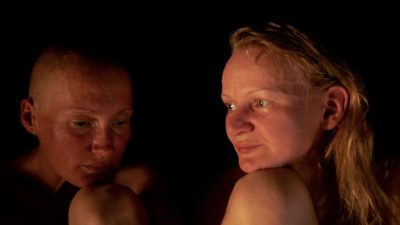
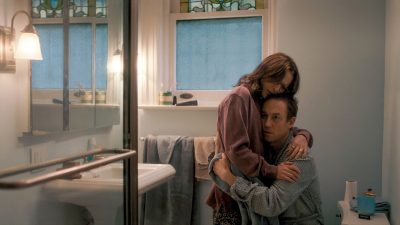
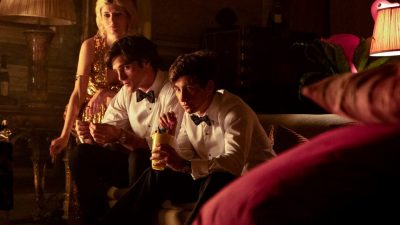

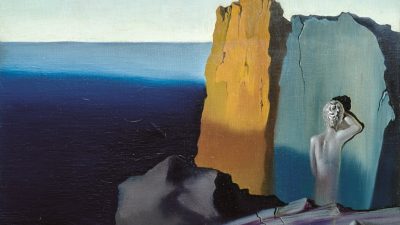



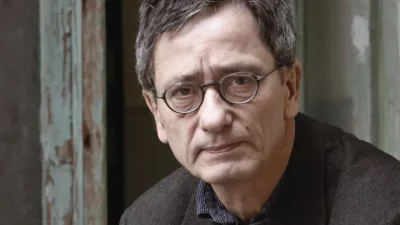



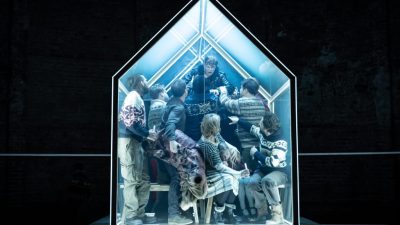






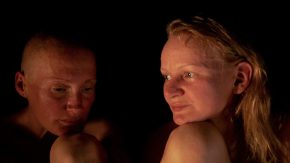
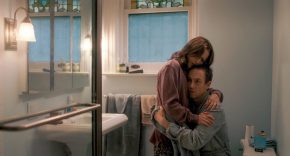

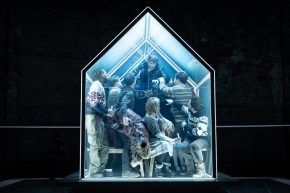
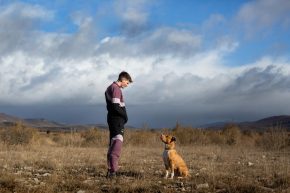

Comments